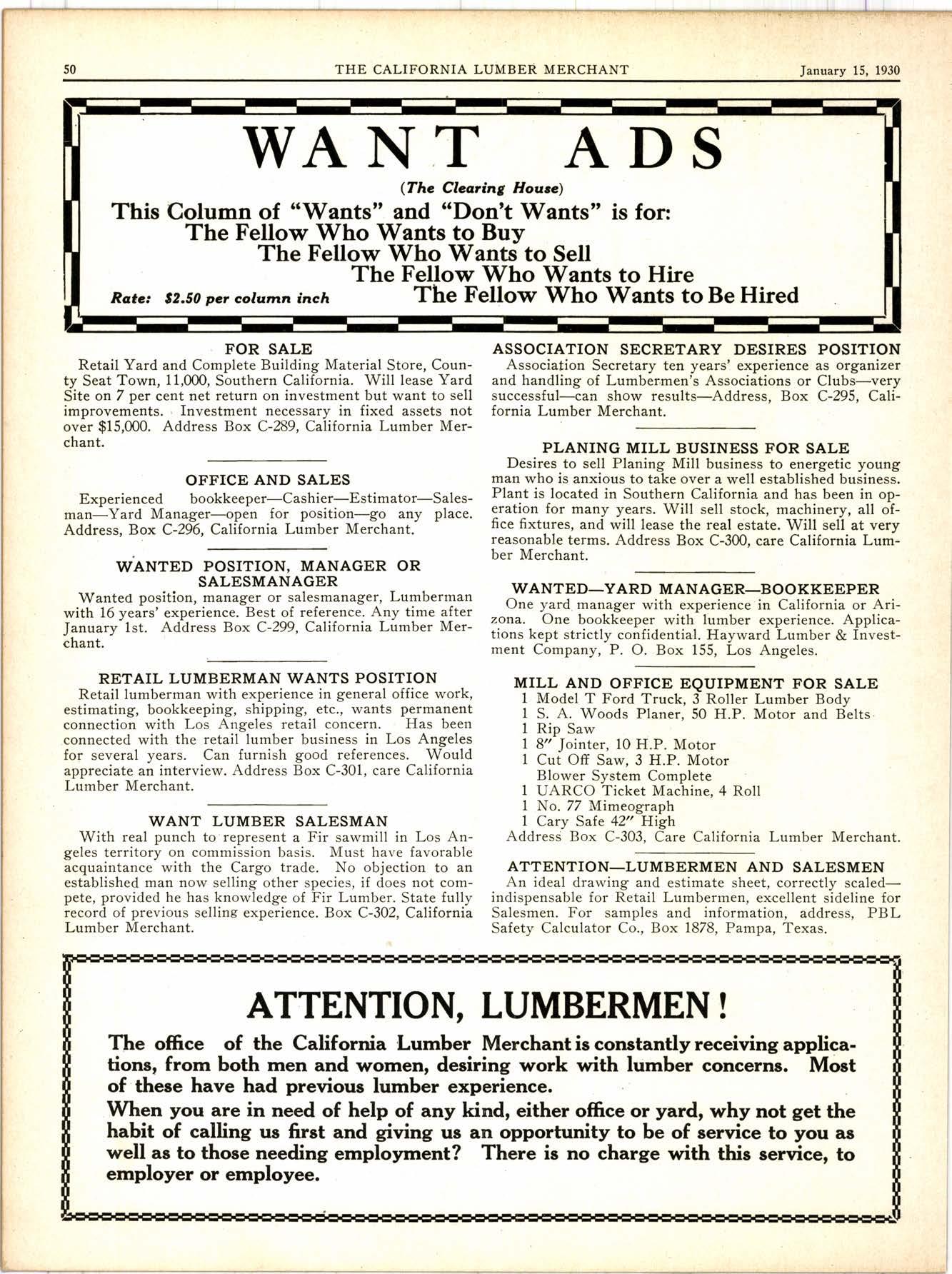
3 minute read
Vagabond Editorials
By Jack Dionne
Let us go to the thinkers of other industries for some optimistic facts. That's one thing about the lumber industry that has always impressed me. \ll/e seem to do so little comprehensive thinking of our own, and we develop so infernally few ideas out of our own industry. That, in fact, is its basic weakness' :{< :r< ,r
A famous makerr of shoes, speaking before a recent shoe convention, made a statement that we lumber folks can use in our business, and get much optimism and consolation from. This shoe man was looking ahead of our present temporary disarrangement of business. He talked on the expected development and increase in the population of the United States. Ife was looking for the future consumption of shoes.
He said: "The ls\il€bt guess on population of the United States in 1950 is 28,000,000 more than the number of people we have in the United States today. Guesses run to 53,000,000. Don't forget they must all wear shoes." fsn't there a ray of light for you there,*my doubting lumber friends?
Suppose we take this minimum increase. And let us assume that the per capita consumption of lumber will remain the same as in the past few years. What does it mean? It means that twenty years from today we should be consuming at least EIGHT
BILLION FEET MORE LUMBER IN THIS COUNTRY THAN WE ARE CONSUMING TODAV.
It means that every year from now should bring us additional normal consumption of a third to a half billion feet of lumber. ft's automatic. you can't stop it. you don't have to do anything to create it. Al,l you have to do is sell a normal amount of lumber to all the population, and that is based on the very of recent years.
Is that a bleak outlook? If this shoe man's low guess is too low, it might be easy to assume,that the population in_ crdase should take care of the entire output of some of our well known species of wood. And each year, as big batches of mills cut out and disappear, (thus automatically help. ing the remaining milts) there will come this automatic additional consumption. Think what it means !
And all the lumber industry has to do is keep the people fairly well sold on the use of wood for building porpor.r. Based on this shoe estimatg five years from toa"y ""r."r, million more people will be prospective customers of the lumber business; and five years from today several billion feet of present production will be cut out and gone. Five years from today the list of sawmills in the South, hard and softwood,,both-will be the saddest, shortest list im_ aginable. Yet every year there will be , fot ,"o."i;;[ to build buildings ior.
Some lumber manufacturer recently wondered, aloud and in my hearing, if the lumber industry isn't a passing industry. Read the above paragraphs, and think what an impossibly pessimistic question that was ! If the lumber industry were like other industries in its mental attitude toward its own affairs, it would be shouting with enthusiasm at its own marvelous prospects. Other industries do business with a more or less permanent supply of raw materials. The lumber industry does NOT. This industry and the undertaking industry done cdr say-..









